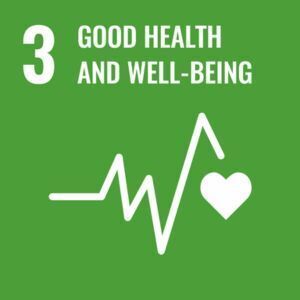Ensure Healthy Lives and Promote Well-Being for All at All Ages
Ensuring healthy lives and promoting the well-being for all at all ages is essential to sustainable development.
Significant strides have been made in increasing life expectancy and reducing some of the common killers associated with child and maternal mortality; major progress has been made on increasing access to clean water and sanitation, reducing malaria, tuberculosis, polio and the spread of HIV/AIDS. However, many more efforts are needed to fully eradicate a wide range of diseases and address many different persistent and emerging health issues.
Facts and Figures
- Child Health
- 17,000 fewer children die each day than in 1990, but more than six million children still die before their fifth birthday each year
- Since 2000, measles vaccines have averted nearly 15.6 million deaths
- Despite determined global progress, an increasing proportion of child deaths are in sub-Saharan Africa and Southern Asia. Four out of every five deaths of children under age five occur in these regions.
- Children born into poverty are almost twice as likely to die before the age of five as those from wealthier families.
- Children of educated mothers—even mothers with only primary schooling—are more likely to survive than children of mothers with no education.
Maternal Health
- Maternal mortality has fallen by almost 50 per cent since 1990
- In Eastern Asia, Northern Africa and Southern Asia, maternal mortality has declined by around two-thirds
- But maternal mortality ratio – the proportion of mothers that do not survive childbirth compared to those who do – in developing regions is still 14 times higher than in the developed regions
- More women are receiving antenatal care. In developing regions, antenatal care increased from 65 per cent in 1990 to 83 per cent in 2012
- Only half of women in developing regions receive the recommended amount of health care they need
- Fewer teens are having children in most developing regions, but progress has slowed. The large increase in contraceptive use in the 1990s was not matched in the 2000s
- The need for family planning is slowly being met for more women, but demand is increasing at a rapid pace
HIV/AIDS, Malaria and Other Diseases
- At the end of 2014, there were 13.6 million people accessing antiretroviral therapy
- New HIV infections in 2013 were estimated at 2.1 million, which was 38 per cent lower than in 2001
- At the end of 2013, there were an estimated 35 million people living with HIV
- At the end of 2013, 240 000 children were newly infected with HIV
- New HIV infections among children have declined by 58 per cent since 2001
- Globally, adolescent girls and young women face gender-based inequalities, exclusion, discrimination and violence, which put them at increased risk of acquiring HIV
- HIV is the leading cause of death for women of reproductive age worldwide
- TB-related deaths in people living with HIV have fallen by 36% since 2004
- There were 250 000 new HIV infections among adolescents in 2013, two thirds of which were among adolescent girls
- AIDS is now the leading cause of death among adolescents (aged 10–19) in Africa and the second most common cause of death among adolescents globally
- In many settings, adolescent girls’ right to privacy and bodily autonomy is not respected, as many report that their first sexual experience was forced
- As of 2013, 2.1 million adolescents were living with HIV
- Over 6.2 million malaria deaths have been averted between 2000 and 2015, primarily of children under five years of age in sub-Saharan Africa. The global malaria incidence rate has fallen by an estimated 37 per cent and the mortality rates by 58 per cent
- Between 2000 and 2013, tuberculosis prevention, diagnosis and treatment interventions saved an estimated 37 million lives. The tuberculosis mortality rate fell by 45 per cent and the prevalence rate by 41 per cent between 1990 and 2013
Goal 3 Targets
- By 2030, reduce the global maternal mortality ratio to less than 70 per 100,000 live births
- By 2030, end preventable deaths of newborns and children under 5 years of age, with all countries aiming to reduce neonatal mortality to at least as low as 12 per 1,000 live births and under-5 mortality to at least as low as 25 per 1,000 live births
- By 2030, end the epidemics of AIDS, tuberculosis, malaria and neglected tropical diseases and combat hepatitis, water-borne diseases and other communicable diseases
- By 2030, reduce by one third premature mortality from non-communicable diseases through prevention and treatment and promote mental health and well-being
- Strengthen the prevention and treatment of substance abuse, including narcotic drug abuse and harmful use of alcohol
- By 2020, halve the number of global deaths and injuries from road traffic accidents
- By 2030, ensure universal access to sexual and reproductive health-care services, including for family planning, information and education, and the integration of reproductive health into national strategies and programmes
- Achieve universal health coverage, including financial risk protection, access to quality essential health-care services and access to safe, effective, quality and affordable essential medicines and vaccines for all
- By 2030, substantially reduce the number of deaths and illnesses from hazardous chemicals and air, water and soil pollution and contamination
- Strengthen the implementation of the World Health Organization Framework Convention on Tobacco Control in all countries, as appropriate
- Support the research and development of vaccines and medicines for the communicable and noncommunicable diseases that primarily affect developing countries, provide access to affordable essential medicines and vaccines, in accordance with the Doha Declaration on the TRIPS Agreement and Public Health, which affirms the right of developing countries to use to the full the provisions in the Agreement on Trade Related Aspects of Intellectual Property Rights regarding flexibilities to protect public health, and, in particular, provide access to medicines for all
- Substantially increase health financing and the recruitment, development, training and retention of the health workforce in developing countries, especially in least developed countries and small island developing States
- Strengthen the capacity of all countries, in particular developing countries, for early warning, risk reduction and management of national and global health risks

Related References
World Health Organization
UN Children’s Fund
UN Development Programme
UNAIDS
Roll Back Malaria
UN Population Fund
UN Women
UN Water
End Open Defecation
Stop Tuberculosis Partnership
UNFPA HIV & AIDS
UNFPA Sexual & Reproductive Health
UNFPA Obstetric Fistula
UNFPA Midwifery
See original content at: United Nations Sustainable Development Goals


